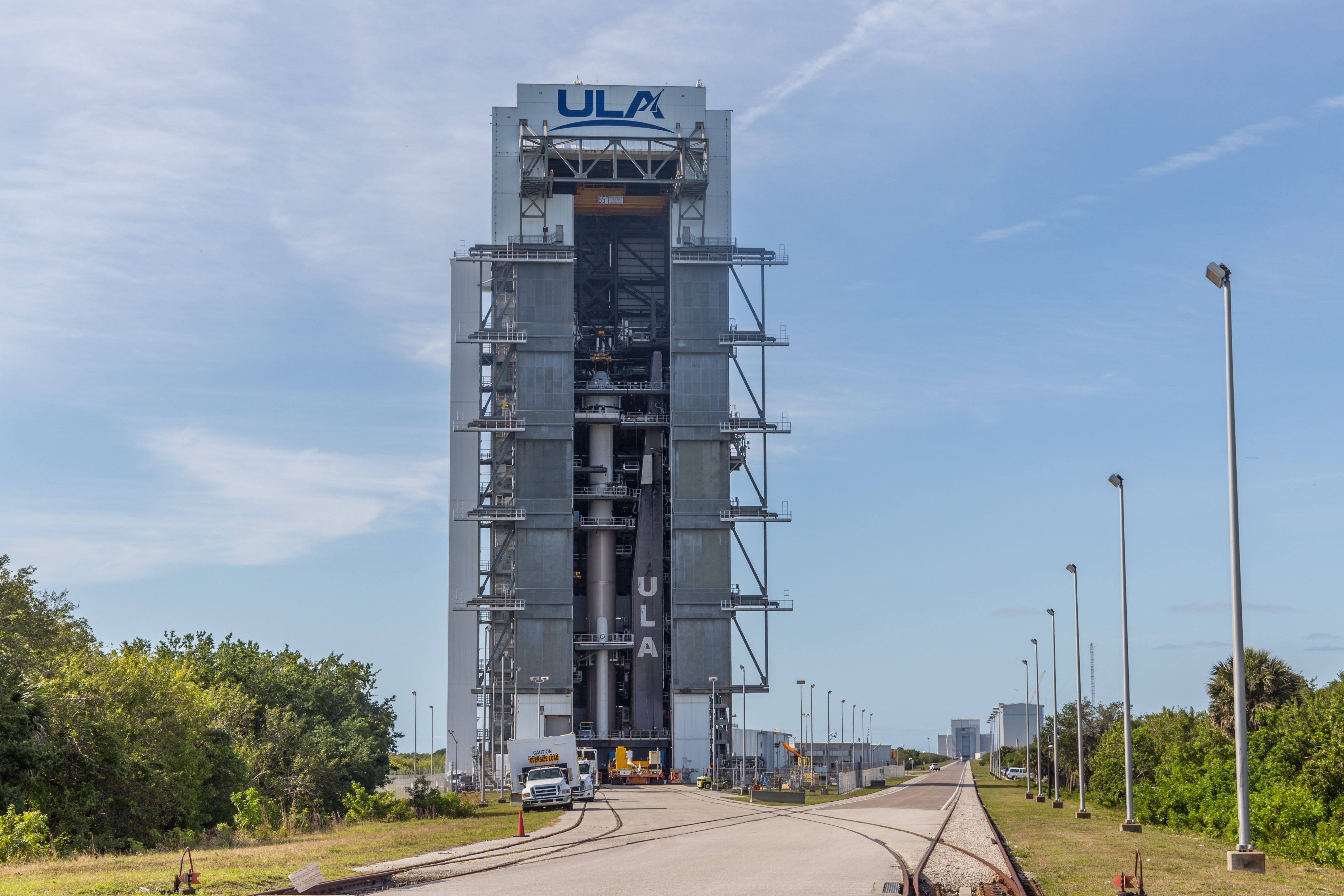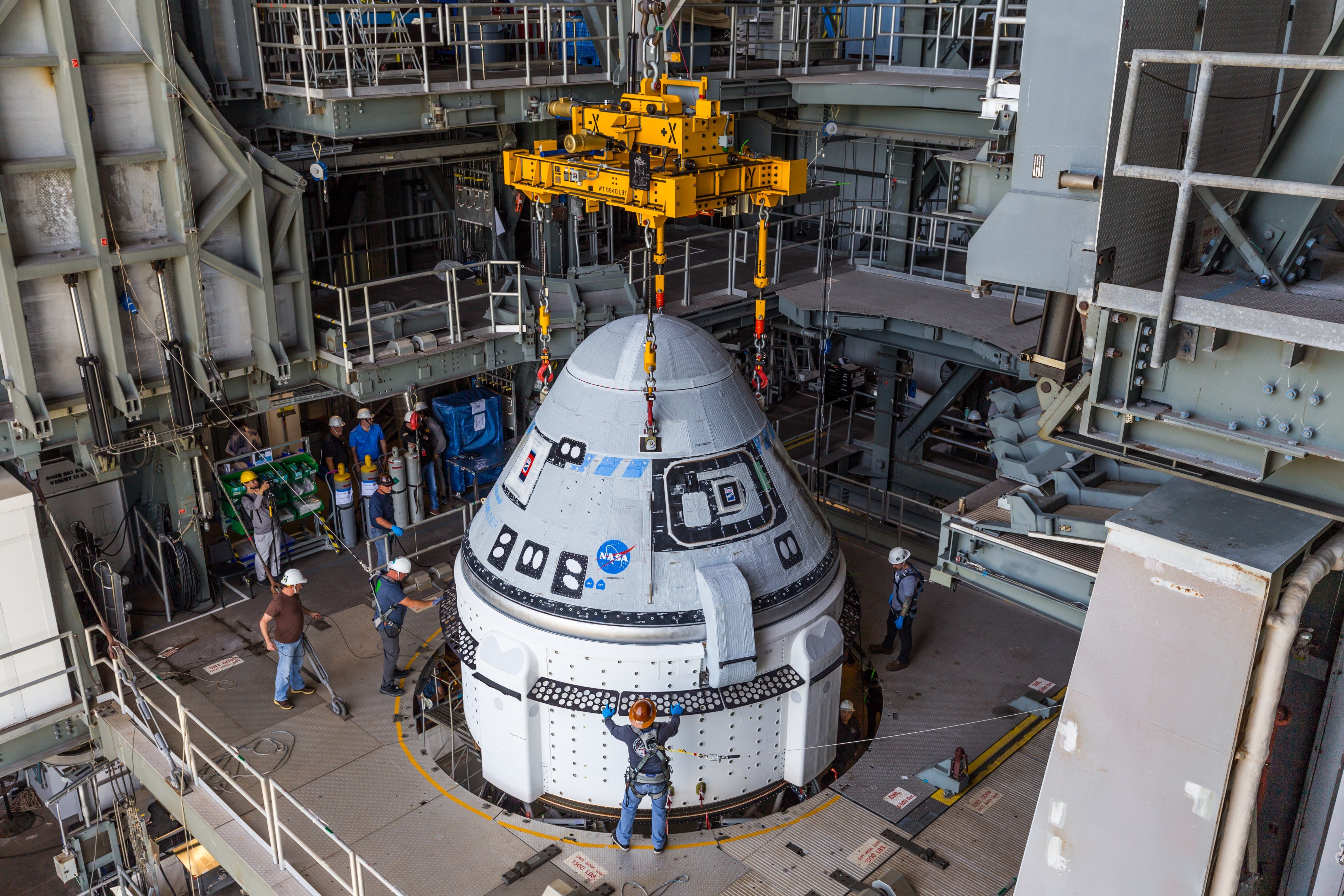
On the shoulders of Atlas, Boeing's CST-100 Starliner spacecraft will soon launch two NASA astronauts on the Crew Test Flight (CFT) to the International Space Station for NASA's Commercial Crew Program.
United Launch Alliance (ULA) is readying the Atlas V rocket for the historic flight test that is targeted for launch on May 6 from Space Launch Complex-41 at Cape Canaveral Space Force Station in Florida.
Astronauts Butch Wilmore and Suni Williams will be the first crew members to fly aboard Starliner. Wilmore, the CFT commander, is a retired U.S. Navy captain and veteran of two previous spaceflights to the space station. Williams, serving as the CFT pilot, is also a retired Navy captain and veteran of two previous spaceflights as a long-duration resident aboard the orbiting laboratory.

This morning, Starliner traveled from Boeing's Commercial Crew and Cargo Processing Facility (C3PF) at NASA's Kennedy Space Center to ULA's Vertical Integration Facility (VIF) for connection to the Atlas V.
ULA's motorized payload transporter, adapted to carry Starliner, moved at a top speed of 5 mph, heading from the C3PF, a former space shuttle hangar, eastward to the beach and then southward to the launch site. The transporter deck also provided Starliner with environmental controls to keep its compartments in good health during the transport.
Approaching the VIF, the transporter maneuvered up to the 30-story-tall building's doorway and parked. A four-point lifting sling, called the Handling Fixture Hoist Tool, was connected to the Starliner, for the overhead crane to carefully raise the spacecraft onto the Atlas V waiting inside the VIF aboard its Mobile Launch Platform (MLP).
Starliner was positioned for mating to the Launch Vehicle Adapter (LVA) that serves as the spacecraft's cradle on the rocket during ascent. The LVA also features the aeroskirt structure that smooths the air over the combined payload and Atlas V for aerodynamic stability.
Next up is the integrated systems test, a tip-to-tail electrical check of the 172-foot-tall (52-meter) Atlas V and Starliner stack.

The MLP will move the rocket and spacecraft to the pad approximately two days prior to liftoff for final sequence of activities that include testing, fueling, boarding of the astronaut crew and launch.
Starliner is a next-generation, autonomous spacecraft for safe and reliable crew and cargo transportation to and from low-Earth orbit destinations. For NASA missions to the orbiting laboratory, Starliner will carry up to four NASA-sponsored crew members and about 220 pounds of time-critical scientific research.
CFT will reuse the Starliner crew module that flew the first OFT mission, named Calypso by Williams.
Following a successful CFT mission, NASA will begin the final process of certifying the Starliner spacecraft and systems for crew missions to the space station. Long-duration commercial crew rotation missions enable NASA to continue the important research and technology investigations taking place aboard the orbiting laboratory. Such research benefits people on Earth and lays the groundwork for future space exploration.
Learn more about the Atlas V CFT launch
See our CFT photo album

 Back To Blog List
Back To Blog List



